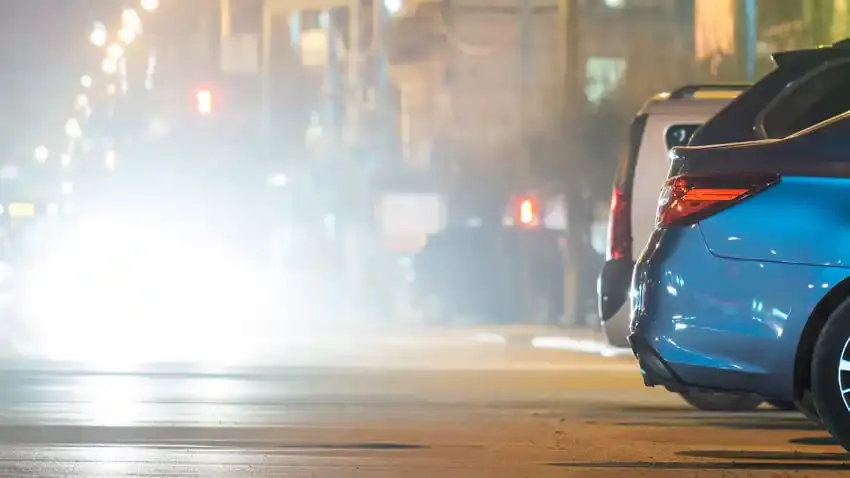
A lot of attention has been focused on car headlights recently: specifically on the question of whether or not they are too bright.
Although many road users have been complaining about dazzling headlights for years, it was only late last year that comprehensive studies of the issue were announced.
The first of these studies, commissioned by the government, is being conducted by the Transport Research Laboratory (TRL) in Berkshire. A vehicle equipped with specialist instruments will measure light levels in the kinds of contexts in which drivers experience them.
The tests will be in various weather and ambient light conditions, which should give a good overview of which combinations of headlights and ambient environmental conditions present the problems that drivers have reported. Findings are due to be presented to the Department of Transport this spring, along with recommendations.
The government commissioned study was announced after campaigning by RAC and the College of Optometrists.
Public opinion
The second study was carried out by the RAC, who surveyed over 1800 motorists who drive at least once a month. The survey's key findings included the following:
- 91% of drivers responding saying ‘some’ or ‘most’ car headlights are too bright and 54% of these saying they are dazzled more regularly now than a year ago.
- 77% say it's difficult to judge the position of oncoming vehicles on the road when their headlights are so bright.
- 60% said they are regularly dazzled by oncoming headlights even when dipped.
- 60% said they sometimes couldn't tell whether headlights were dipped or on full beam.
- 25% of drivers who find vehicle headlights too bright are driving less at night due to the problem.
- 70% believe some lights are so bright they represent an accident risk.
That last opinion point is supported by government statistics that show 280 collisions a year cite dazzling headlights as a contributing factor.
RAC pointed out that the international standards, that UK headlights must meet, have not been updated since the 1960s, unlike headlight technology which has seen huge changes since that time.
Eye of the beholder
In a BBC online article from December 2024, Rachael Smith, an optometrist from Winchester opticians Rawlings Opticians & Hearing Care, said, "We see drivers of all age ranges, from 17 right through to older people, and they all complain about glare and discomfort, or being dazzled."
Ms Smith explained that when a person was dazzled by a bright light, the chemicals inside the eye became "bleached out", which can cause colour spots. When that happens, it takes between one and four seconds for the eye to recover, depending on a person's age.
As Ms Smith pointed out, "If you're travelling at 60mph that's quite a difference in the amount of road covered."
Why are headlights causing problems now?
As we said above, while the technology guiding headlight design and manufacture has come on in leaps and bounds, the international standards governing them are still stuck in the 1960s.
New lighting technologies have created more efficient, more compact and brighter automotive lights than ever before. But not only are headlights objectively brighter than they used to be, they are also often positioned higher than they were decades ago, when the standards were established. The proliferation of SUVs and similar cars means that drivers of standard saloons and hatchbacks etc are constantly exposed to glare from headlights that are almost at eye level.
Which headlights cause the issues?
Let's make it clear from the start that any headlights can dazzle other road users if they are not installed and used correctly. Headlights must be aligned and angled so the beams point where they should, however it is common for headlights to drift off-target. This can happen due to trauma - a collision, hitting traffic-calming bumps at inappropriate speeds, etc. It can also happen when the mechanisms controlling adjustable headlights fail or malfunction.
Even perfectly installed, calibrated and aligned lights will cause problems if the driver leaves them set on high-beam while facing oncoming traffic. Some drivers seem almost to treat it as a game of "chicken", only dipping their headlights after the other guy has dipped his first.
All that said, some kinds of lights are brighter than others, and some of them can get really bright. Here's how they compare.
Halogen
These are your traditional headlights, the kind we've all skinned our knuckles on trying to contort our hands to change near-inaccessible bulbs.
The technology is simple: a tungsten filament in a glass tube or bulb filled with a mixture of gases. They can take a while to warm up and reach full brightness. And they certainly do warm up! The high temperatures generated by halogen bulbs are an indication of their inefficiency. The light from these lights is also relatively poorly focused.
LED
LEDs are everywhere. These Light Emitting Diodes can be very small but also very bright. They are efficient, long-lasting and they generate relatively little heat. It's thanks to LEDs that even cyclists' front lights have become many, many times brighter than they used to be - to the point, in fact, of presenting an additional dazzle hazard to other road users. LEDs reach full brightness very quickly.
The downsides are the increased potential to dazzle, and the fact that they are considerably more expensive than their halogen counterparts.
Xenon/HID
Xenon lights, also called High Intensity Discharge (HID) lights are up to three times brighter than halogen bulbs with the same wattage. These lamps are not only far more efficient than halogen, they also have a much longer lifespan.
HID headlights produce a clear blue-white light, but are still relatively uncommon due to the expensive materials necessary for their manufacture. HIDs take a while to reach full brightness, but once they do, their power and efficiency make them real dazzlers.
Laser
They may sound pretty sci-fi, but laser headlights don't shoot beams to blast away the rush hour traffic on the road in front of you on a winter evening. The actual laser light is used inside the headlight, in combination with gases, to generate the bright light that is focused onto the road.
At the moment, cost means that laser headlights are relatively rare, but they may become more common if they become less expensive. A bright type of headlight with definite dazzle potential.
Solutions
It's unclear at the moment what steps the government may take based on the results delivered by the study. A new set of standards is a definite possibility, but would they be UK only, or worked out with the EU? A unique set of standards applying exclusively to the UK would clearly present problems for manufacturers and importers.
What would be done about existing headlights? Would manufacturers be expected to issue recalls to make changes? It's really all very unclear at the moment.
DIY fixes
As drivers we have the power to instantly reduce the problem of dazzling headlights: we just have to use them sensibly and considerately.
- Dip headlights off full-beam when there is oncoming traffic. Don't wait for the other guy to give in first, just flip the switch as soon as we become aware of vehicles coming the other way.
- Don't use full-beam if we're driving behind other vehicles. Headlights can be almost as dazzling in a mirror as they are head-on.
- Don't use full-beam when it's not necessary, especially in wet weather when reflections can make problems a lot worse.
- Don't use full-beam in fog. It's pointless as they will just make visibility worse for us and other drivers.
- If we think our headlights may not be properly aligned, take the car in to have them checked.
We can't solve the issues as individuals, but we can certainly try not to make things worse.
